Peter “Wolf” Toth is an American sculptor born in Hungary, who immigrated to Ohio and studied art at Ohio University. Beginning in 1971, he created a series of large sculptures to honor Native Americans. His first was made of stone, carved into a sandstone cliff in La Jolla, California, a six-foot-high Native American head. It took him three months.
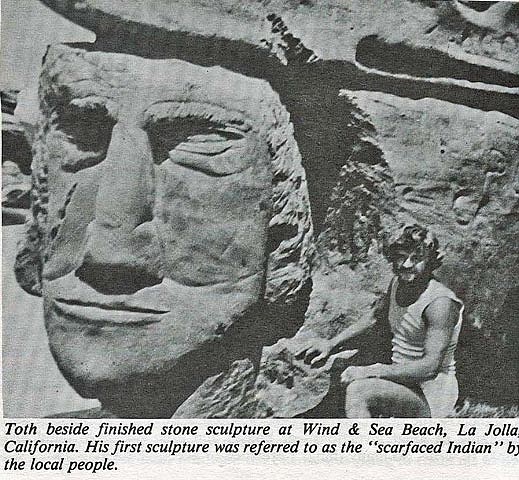
His goal became to create a sculpture in each state. Toth donates his time and effort to each sculpture, and the communities typically provide the large log or timber used for the carving. The statues vary in size, with some of the largest towering over 40 feet tall, with most ranging from 15 to 40 feet.
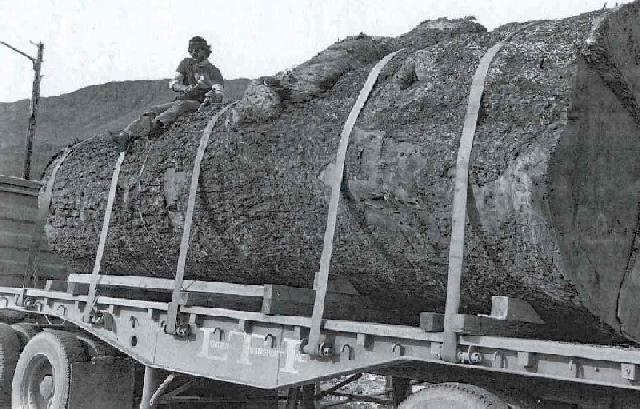
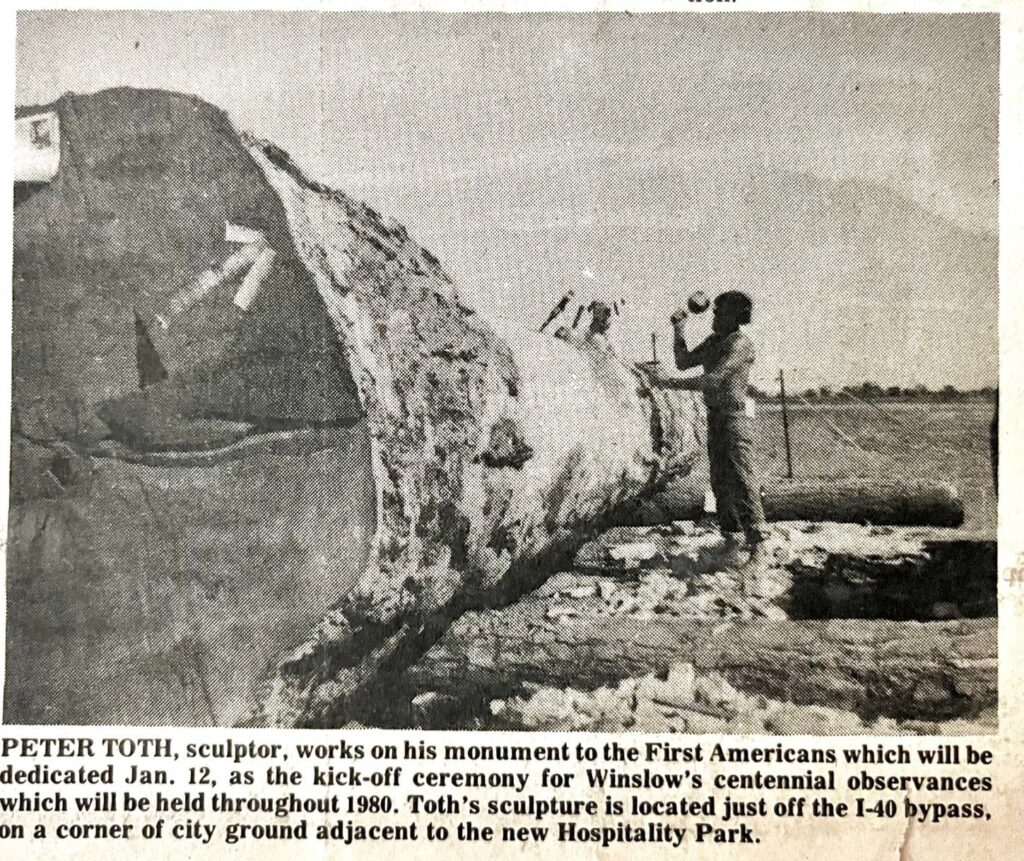
From the Winslow Mail, Thursday, January 3, 1980, Peter Toth carving a 3000 pound log Ponderosa pine to create this 20 foot tall statue.
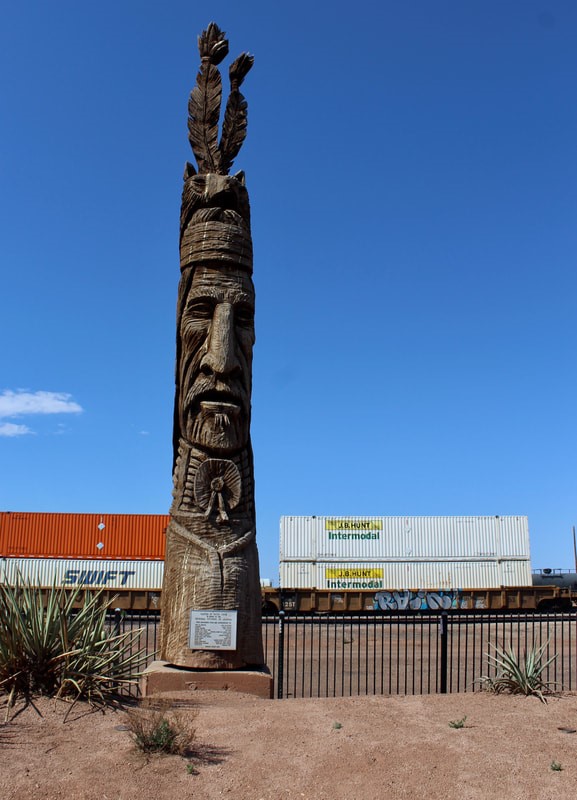
From Roadside Arizona
He sculpted his second large contribution to his Trail of the Whispering Giants series, in his hometown of Akron, Ohio. Carved from Kentucky red oak, Rotaynah was removed in the fall of 2018 due to extreme deterioration, but the face of the sculpture was saved and is currently in storage.
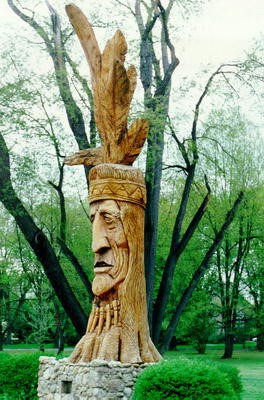
Since then he has completed a statue in each of the 50 states, and in several provinces of Canada, and some states, such as Florida, now have more than one sculpture. His mission was completed in May 1988, when he finished sculpture #58 in Hawaii. Instead of a Native American figure, like the other Whispering Giants, Toth opted to carve a statue of a Polynesian for the Hawaiian islands. That statue has since decayed,
I first discovered a Whispering Giant in a recent trip to Plymouth, Massachusetts, where I encountered Enisketomp, standing beside Highway 3, Exit 5, in front of a McDonald’s of all places. Carved in 1983, this giant is named from the Wampanoag word for “human being” and is designated as a gift to the people of Massachusetts.
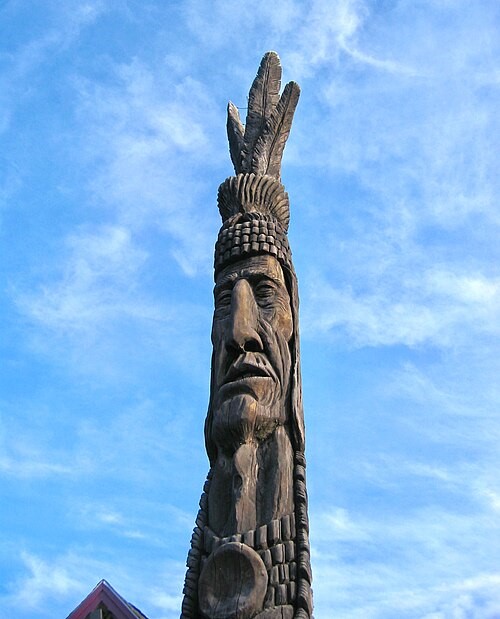
Enisketomp. Wikimedia
“I study the Indians of the area, then visualize an Indian within the log. It is a composite of all the native people of the state.” A quote from Peter Toth.
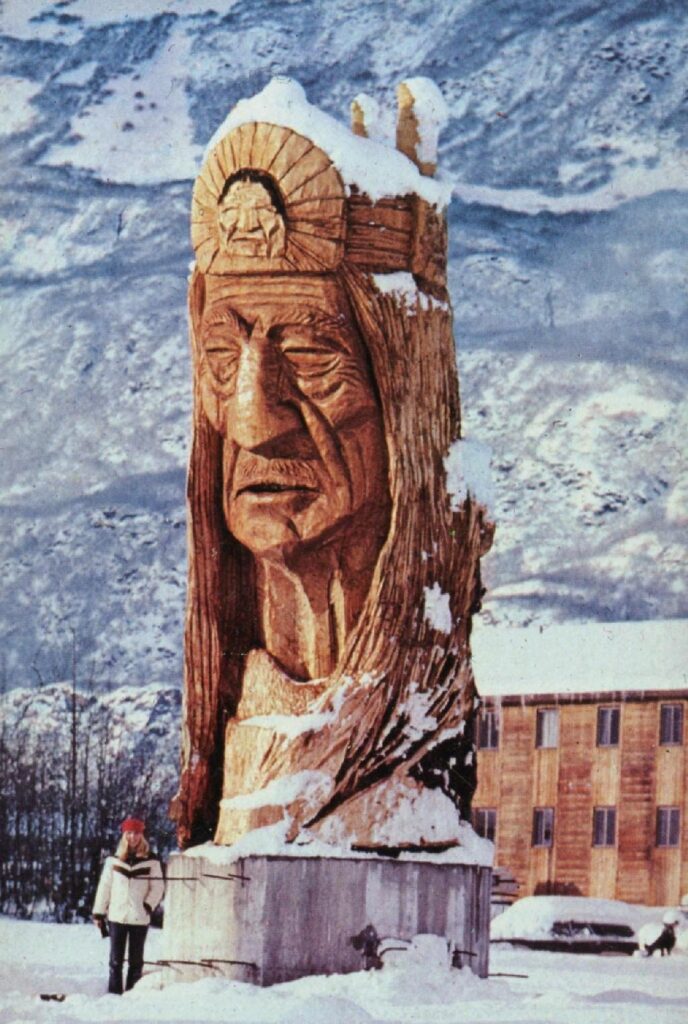
This Whispering Giant is pictured on a postcard, dedicated in October 0f 1981. The material is Sitka spruce and the Lakota Sioux Nation contributed to the sculpture.
“I study the Indians of the area, then visualize an Indian within the log. It is a composite of all the native people of the state.” A quote from Peter Toth.
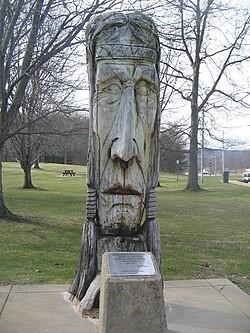
Seneca, found in Seneca, Mercer County, Pennsylvania (Wikipedia)
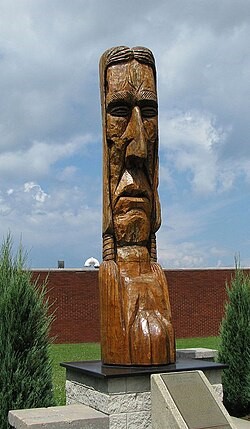
On Gwe Ohn Whe, New York (Wikipedia)
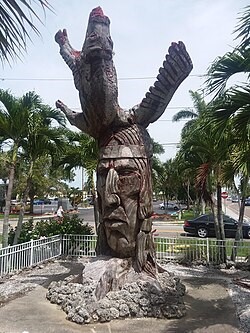
Calostimucu, Punta Gorda, Florida (Wikipedia)
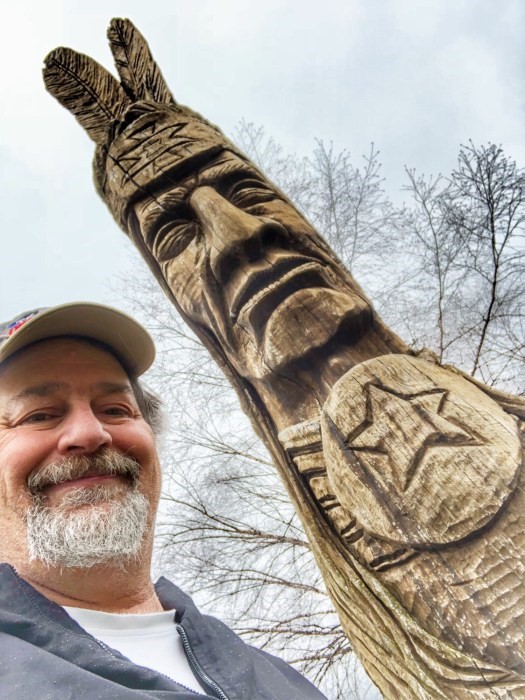
Peter Toth
![]()

What a talented wood carver and a great dedication.
I can’t imagine his dedication. He is still carving, mainly repairing many of the older ones.
Wonderful, Noelle. Thank you. x
Thanks for stopping by, Judith. Always good to have you visit!
Aren’t they splendid?! I love the one for the Sioux. Such a lived in face!
They are very imposing. I was turned on to his work when I saw the one in Plymouth, which is HUGE!
They look impossing and truly wonderful. It’s a shame that some of them decay, but exposed wood will do that, and I guess perhaps that’s the idea. Thanks, Noelle.
I suspect you’re right, Olga. The one in Hawaii went downhill rapidly – moisture, I bet. Thanks for stopping by!
Amazing, Noelle. I can’t imagine how he did it.
I can’t either, John. All he uses is a chisel and hammer.
Mr Toth’s carvings are stunning. Thank you for sharing this wonderful artist and his tribute to the Native Americans of each area.
I’m gald you liked it, Takami. What an undertaking!
Wow! What an amazing goal for this artist. Now I need to find where his sculpture is in Texas. 🙂 Thanks for sharing, Noelle!
Glad you like the post. There is a list of statues and their locales on Wikipedia. Maybe you can find one near you.
What I found is that the Peter Toth sculpture in Texas was destroyed by a storm. 🙁
Oh, sorry to hear that. The weather is not kind to these magnificent pieces.
I’ve never heard of Peter Toth. This was fascinating.
Thanks, Jaqui. I just happened on the statue in Plymouth.
That’s kind of cool. Wouldn’t it be great if each of the states also supported a Native American artist or two in creating and displaying public art?
Absolutely. But they need a lot of statues to represent the 574 federally recognized American Indian tribes and Alaska Native Villages, if the artist just did statues. There is a Cherokee Art Museum in NC.